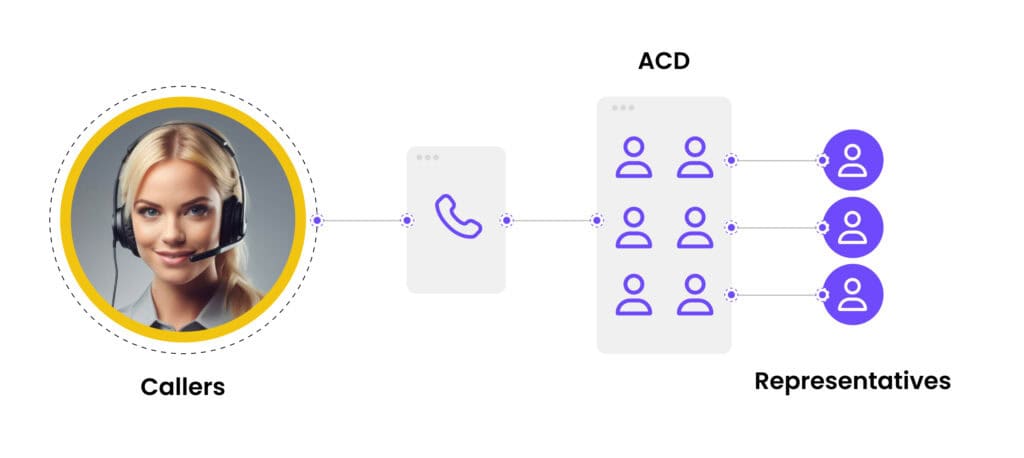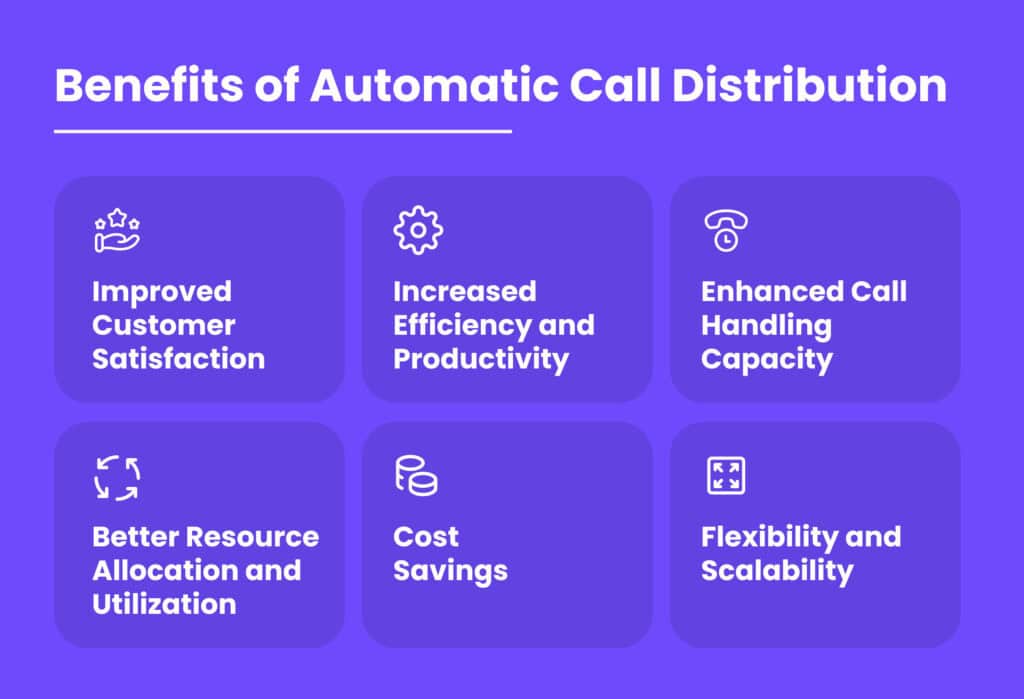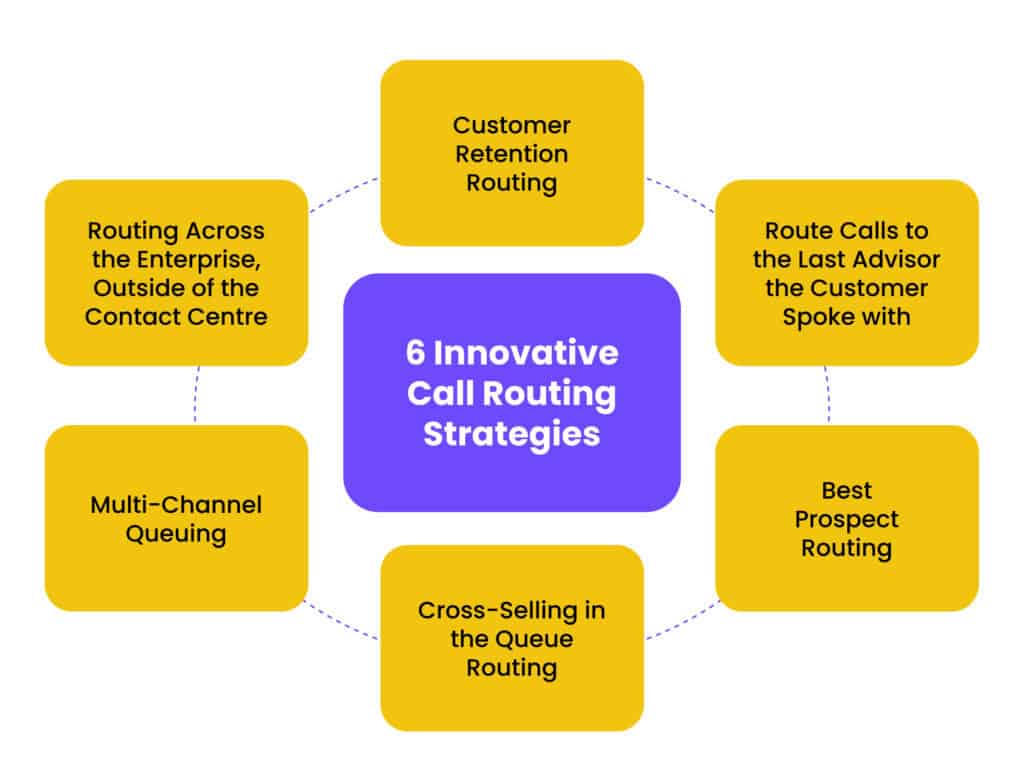Have you ever called a business and been swiftly connected to the right person without bouncing between departments? That’s Automatic Call Distribution (ACD) in action. It ensures calls get to the right place without unnecessary delays. But what exactly is ACD, and how does it work? Let’s break it down.
What Is Automatic Call Distribution?
Effective call management is critical for organisations with high volumes of inbound customer calls. ACD ensures that each and every call reaches the proper individual in a timely manner, preventing customer frustration and operational inefficiencies. Without ACD, businesses might struggle with overloaded phone lines, misrouted calls, and long hold times, all of which can negatively impact customer satisfaction and productivity.
Definition of ACD
At its core, ACD is an intelligent call-routing system that streamlines the way businesses handle incoming calls. It does this through the analysis of call information, application of pre-defined routing tables, and the routing of a call to the right agent. Unlike ordinary call forwarding, with ACD, call flow is dynamically managed for both efficiency and improved customer service.
The Purpose of ACD in Call Management

Companies use ACD systems to improve communication, maximize efficiency, and deliver error-free customer service. They have great use in call centers, customer service departments, and sales teams, which receive enormous volumes of calls on a daily basis. Here’s how ACD improves call management:
- Reducing wait times by directing calls to available agents immediately, preventing customers from being stuck in long queues.
- Matching callers with the appropriate team by evaluating their needs and directing them to the most appropriate department or representative, allowing for issues to be resolved more quickly.
- Avoiding bottlenecks by balancing call loads across agents, which helps companies to have consistent operations even at peak times.
- Improving customer satisfaction by minimizing call transfers and enabling faster problem resolution.
- Boosting agent productivity by streamlining call handling, reducing idle time, and allowing employees to focus on assisting customers rather than navigating inefficient call routing processes.
It also enables a business to develop a better, more systematic method of call processing, further enhancing customer experience and workflow efficiency within an organization.
How ACD Systems Work
ACD goes beyond just routing calls, and involves making informed intelligent decisions in real time. Companies depend on these systems to ensure every incoming call is handled with efficiency, leading to better customer experiences and more productive teams.
Call Routing Based on Criteria
Not every call is equal, and ACD takes this into consideration by separating and distributing calls according to several factors. The aim is to connect the caller with the most appropriate agent in the shortest time possible. This avoids frustration, gets customers talking to the right individuals, and streamlines workflow. Here’s how ACD determines where each call will go:
- Caller ID & Location – Knowing who is calling and where they’re located helps prioritize or personalize the experience.
- Call History – If a caller has previously spoken to a particular agent or department, ACD can route them back for continuity.
- Agent Availability & Capacity – Calls go to agents who are free and not overloaded with other calls.
- Skill-Based Routing – If a customer requires technical support, the call is directed to an agent with the appropriate expertise, rather than a generalist.
Technology Behind Interaction Routing
ACD is driven by cloud-based technology and smart algorithms that evaluate incoming calls in real time. It is easily integrated with Customer Relationship Management (CRM) systems so that all caller information is utilized for more informed decision-making. Some of the main technological elements are:
- AI-Powered Call Analysis – AI can analyze caller intent and previous interactions to determine the best course of action.
- Interactive Voice Response (IVR) Integration – IVR systems work with ACD to pre-sort callers, ensuring they reach the correct department faster.
- Predictive Call Distribution – Sophisticated ACD systems utilize historical information to forecast call volumes and adapt routing strategies dynamically.
- Omnichannel Capabilities – Today’s ACD products don’t only manage telephone calls but also integrate with SMS, email, and chat platforms to provide a single customer experience.
Types of Automatic Call Distribution
ACDs offer different routing methods, which reflects the variance that occurs across organizations. Here are some common types:
- Fixed Order Routing – Calls follow a strict sequence, always ringing Agent A before Agent B. This ensures priority is given to certain team members first.
- Round Robin Routing – Calls are evenly distributed among available agents, preventing any one person from being overwhelmed.
- Weighted Routing – More experienced or highly skilled agents receive a larger share of calls, ensuring complex issues are handled by the right people.
- Time-Based Routing: Calls are routed depending on the time zone, business hours, or agent shift schedules to ensure 24/7 coverage.
- Geographic Routing: ACD routes calls based on the caller’s location. This feature is very helpful for businesses that have regional offices or language-specific support teams.

Functions and Features of ACD Systems
Apart from call routing, ACD systems are very feature-rich, with functionalities aimed at enhancing efficiency, customer satisfaction, and business continuity. The features allow businesses to process high volumes of calls without bogging down their personnel or keeping their customers waiting.
Skills-Based Routing Explained
Not all agents are created equal when it comes to proficiency. While some are customer retention or sales experts, others are technical support specialists. Skills-based routing directs calls to the most appropriate agent automatically based on their proficiency and interaction history. This leads to:
- Faster issue resolution, with direct access to an appropriately qualified person.
- Enhanced customer satisfaction, as callers don’t need to repeat the explanations or complaints.
- Better workloads, leveled out according to skill sets, not availability.
Managing Multiple Call Queues
Call centers often handle multiple departments or services, each requiring a different approach. ACD systems dynamically manage multiple queues to ensure calls are handled fairly and efficiently. This means:
- High-priority callers or VIP customers can be placed in priority queues.
- Calls can be rerouted to another queue if wait times are too long.
- Agents can be assigned to multiple queues based on their availability and expertise.
This adaptive queue management reduces customer wait times and prevents unnecessary congestion in high-traffic departments.
Integrating Auto-Attendants
An auto-attendant acts as a virtual receptionist, guiding callers through pre-set options to direct them to the appropriate department. This feature:
- Speeds up call handling by letting customers choose where their call should go.
- Reduces agent workload as basic inquiries (like hours of operation) can be answered automatically.
- Improves efficiency, as callers are pre-sorted before reaching a live agent.
Businesses can customize auto-attendants with recorded greetings, menu options, and interactive voice response (IVR) capabilities for a seamless experience.
Handling Call Center Overflow
Busy periods, seasonal spikes, and unexpected surges in call volume can overwhelm even the most well-prepared teams. ACD systems help manage overflow by:
- Routing excess calls to backup agents, other departments, or remote staff.
- Allowing customers to leave a voicemail instead of waiting endlessly on hold.
- Offering self-service options via IVR or chatbots when agents are unavailable.
By ensuring that no call goes unanswered, ACD helps businesses maintain excellent service levels, even during high-demand situations.
Automatic Call Back Features
Nobody likes being on hold. To make the experience a little more customer-friendly, ACD systems offer options for automatic call-backs that enable callers to:
- Request a call-back instead of waiting on hold.
- Keep their place in the queue and receive a return call when an agent is available.
- Set preferred call-back times, reducing missed connections.
This feature reduces frustration, decreases hold times, and ensures customers receive assistance without having to wait on the line unnecessarily.

Benefits of Using ACD Systems
ACD helps businesses respond faster, keeps agents productive, and makes customer interactions smoother. The right system ensures every caller gets help without the hassle.
Enhancing Customer Experience
No one likes long hold times or being bounced between departments. ACD helps businesses create a frictionless experience by ensuring that customers reach the right person quickly. With intelligent call routing, businesses can:
- Minimize frustration by reducing the number of times a caller is transferred.
- Provide consistency by routing repeat clients to agents who know their history.
- Provide personalized service by routing priority clients to specialized teams.
A well-configured ACD system not only speeds up resolutions but also strengthens customer relationships by making interactions smoother and more efficient.
Reducing Wait Times Effectively
Callers don’t have time to waste. Smart routing means they get help faster, without unnecessary delays. ACD optimizes response times by:
- Determining the most suitable available agent at any particular time.
- Employing call-back features so that customers aren’t kept waiting on hold.
- Routing basic inquiries to automated systems which let agents deal with more complicated problems.
By dynamically adjusting call flows, businesses can keep queues moving efficiently, even during peak hours.
Boosting Agent Efficiency and Resources
ACD ensures that each call goes to the best-fit agent, reducing burnout and boosting productivity. When calls are distributed efficiently, businesses can:
- Enhance first-call resolution rates, which results in reduced repeat calls.
- Improve morale for agents, since workers aren’t overwhelmed by incorrectly routed questions.
- Better utilize resources, with skilled agents working on the most appropriate tasks.
Efficient ACD systems result in a more balanced workload and higher service quality.
Recognizing Important Callers Quickly
Frequent callers, VIP customers, or urgent cases? ACD can prioritize these calls, making sure they don’t get stuck in the queue. Businesses can customize ACD settings to:
- Fast-track high-value customers to priority support teams.
- Recognize returning customers and route them to agents familiar with their history.
- Handle emergencies by directing urgent calls to senior staff immediately.
This feature ensures that key customers always receive timely and efficient service.
Gathering Usage Statistics

ACD tracks everything: call duration, agent performance, peak hours of the day/week. It helps business operations move toward better staffing, smoother workflows, and wiser decisions. Analyzing call trends helps a business to:
- Identify high-traffic periods and adjust staffing levels accordingly.
- Monitor agent performance to provide targeted training.
- Improve service strategies by identifying common customer pain points.
Data-driven insights from ACD reporting empower businesses to fine-tune operations and enhance overall efficiency.
Strategies for Effective Call Routing
To realize the fullest potential of ACD, a business needs to have some serious strategies in place for effective call routing.
1. Priority-Based Distribution Methods
Some calls are more important than others, and the way companies handle such calls makes all the difference in customer satisfaction. ACD can be easily set up to collate all emergency or high-value calls and route them directly to the right team. This could work effectively with:
- VIP customers who expect immediate assistance and specialized support.
- Emergency situations, where quick resolution is critical.
- Time-sensitive inquiries, such as sales leads that need immediate follow-up.
2. Skills-Based Routing Techniques
Matching the right agent to the best call means fewer transfers, faster resolutions, and happier customers. ACD uses pre-defined skill sets to ensure that customers are routed to agents who are best equipped to handle their requests. This technique:
- Reduces misrouted calls and agent frustration.
- Increases first-call resolution rates, improving efficiency.
- Enhances customer satisfaction by ensuring they speak with the most knowledgeable agent.
Businesses can continuously refine their skill-based routing rules based on customer feedback, agent performance, and evolving needs.
3. Handling Geographically Dispersed Teams
For companies with remote agents or multiple office locations, ACD ensures that calls are routed efficiently based on location and time zones. This strategy helps:
- Balance workloads across different regions.
- Improve availability by ensuring customers always reach an agent, even outside standard business hours.
- Reduce latency by connecting callers with agents closest to them, minimizing lag in international calls.
Geographic routing helps businesses provide seamless customer service, no matter where their agents are located.
4. Virtual Call Center Operations

With cloud-based ACD, businesses don’t need a physical office to manage customer support. Agents can work from anywhere, creating a flexible, efficient call center. Benefits of virtual call center operations include:
- Scalability, as businesses can expand or contract their workforce without infrastructure limitations.
- Reduction of overheads since large office areas are not needed.
- Improved agent satisfaction due to flexible remote work that offers a better work-life balance.
As more businesses shift to remote-friendly environments, cloud-based ACD solutions make virtual call centers a practical and cost-effective solution.
Modern Applications of ACD Systems
As businesses evolve, ACD continues to adapt to new applications and technologies. Companies are increasingly moving away from traditional call centers and embracing flexible, cloud-based solutions that improve efficiency and customer experience.
Virtual Call Center Operations
With remote work on the rise, ACD ensures that calls get to the right agent—whether they’re in an office or working from home. Virtual call centers allow companies to operate without the need for a physical space, reducing overhead costs while increasing accessibility to talent. Benefits include:
- Flexibility – Agents can work from anywhere, allowing businesses to expand their workforce beyond a single location.
- Cost Savings – No need for expensive office infrastructure; businesses only pay for what they need.
- 24/7 Availability – Companies can provide round-the-clock support by hiring agents in different time zones.
- Business Continuity – In cases of emergencies or office closures, operations continue seamlessly.

Cloud-Based Contact Center Solutions
ACD works seamlessly with cloud systems, which allow businesses to scale up or down without any expensive infrastructure. Cloud-based contact centers are far more flexible and advanced, becoming a must for any modern team.
- Scalability – Companies can increase or decrease the number of agents as demand fluctuates.
- Enhanced Security – Cloud providers offer robust data encryption and compliance measures.
- Seamless Integrations – ACD works alongside CRM software, help desks, and analytics tools to create a connected customer experience.
- Reduced IT Maintenance – With cloud-hosted systems, businesses no longer have to worry about maintaining on-premise hardware.
The Integration of Geographically Dispersed Teams
Businesses that have representatives dispersed all over the world can utilize ACD for routing the calls to the appropriate agents in the correct time zone. The benefits include:
- Local Time Routing – Calls reach agents during the caller’s business hours for better service.
- Language-Based Matching: Customers are matched with agents who can speak their language for better clarity.
- Smoother Workload Distribution: Calls are distributed to prevent teams from experiencing burnout, keeping them efficient.
Methods for Distributing Incoming Calls
ACD makes call routing smarter, ensuring fair workload balance, better efficiency, and a smoother customer experience. Businesses can choose from:
- Round-Robin – Calls are evenly rotated among available agents to ensure equal workload distribution.
- Weighted Routing – Calls are distributed based on agent skill level, experience, or workload capacity.
- Priority-Based Routing: High-priority customers or urgent calls are routed and served first.
- Longest Idle Routing: It routes calls to the agent who has been idle the longest as a means of distributing the workload.
- Time-Based Routing: Calls are routed based on the time of day, business hours, or availability.
Final Thoughts
ACD makes call handling easier, faster, and more efficient. It removes unnecessary delays, connects customers to the right people, and helps businesses manage call volumes without frustration.
As technology evolves, businesses that invest in a smart ACD system will stay ahead. Whether it’s reducing wait times, improving customer interactions, or giving agents the tools they need to succeed, ACD plays a key role in keeping operations smooth and customers happy. If calls matter to your business, ACD is the solution that makes them work better.
FAQs
Automatic Call Distribution (ACD) is a system that routes incoming calls to the most appropriate agent or department based on pre-set criteria.
It analyzes caller data, agent availability, and routing rules to distribute calls efficiently.
Businesses with high call volumes, including customer support centers, sales teams, and help desks.
No. IVR (Interactive Voice Response) allows callers to choose options via voice or keypad, while ACD automatically routes calls based on rules.
Yes! ACD works with CRM software like CloudCall, allowing businesses to unify their communication channels.



